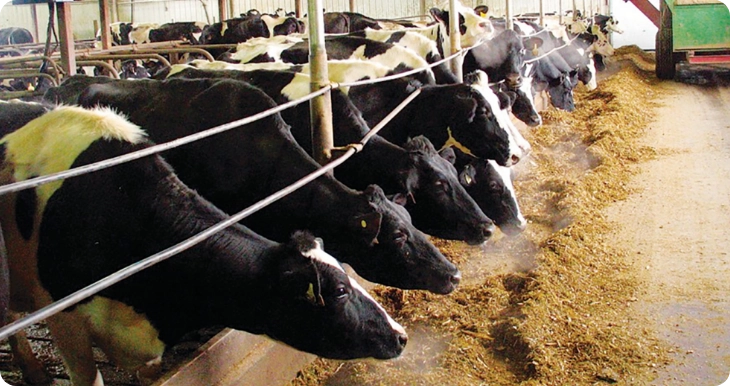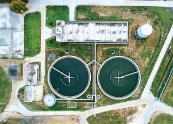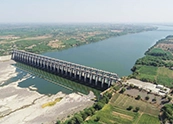2.3 Building Tomorrow: Pioneering Infrastructure Development
Rural infrastructure is a vital driver of economic growth, sustainability, and social development, fostering economic productivity and improving livelihoods. Strategic investment in infrastructure has a profound multiplier effect on economic growth, creating employment opportunities and enhancing rural communities’ overall quality of life. Modern rural infrastructure, including irrigation systems, robust road networks, renewable energy installations, and reliable electricity, is essential for transforming the rural economy and integrating it into the broader development framework. NABARD has emerged as a catalyst for rural transformation, leading the charge in infrastructure development with a comprehensive and inclusive approach. Rural infrastructure is critical for stimulating the rural economy and achieving the United Nations’ Sustainable Development Goals (SDGs) by 2030. Studies reveal that a 1% increase in the stock of infrastructure is associated with a 1% increase in gross domestic product (GDP) across countries1. Furthermore, the estimated welfare multiplier of 0.8 for effective public infrastructure investment can lead to the substantial welfare gains. Several studies have articulated theoretically and established empirically the positive impact of infrastructure on agricultural development.
Through its flagship initiatives such as the Rural Infrastructure Development Fund (RIDF), NABARD Infrastructure Development Assistance (NIDA), Warehouse Infrastructure Fund (WIF), Food Processing Fund (FPF), Dairy Processing and Infrastructure Development Fund (DIDF), and Fisheries Infrastructure Development Fund (FIDF), NABARD has significantly contributed to building essential infrastructure. These initiatives have facilitated the construction of rural roads, irrigation systems, warehousing facilities, market yards and renewable energy projects, driving growth while creating direct and indirect employment opportunities. Furthermore, NABARD’s efforts to expand digital infrastructure have been transformative, enabling internet connectivity across villages and households. This digital leap has facilitated access to education, healthcare, and entrepreneurial opportunities, narrowing the digital divide and fostering inclusive growth. By providing technical expertise and financial support for rural infrastructure projects, NABARD continues to lay the foundation for a resilient, modern, and sustainable rural economy, steering the development trajectory toward inclusive prosperity.

1 Summers and Heston, 1991, cited in World Bank (1994), World Development Report 1994: Infrastructure for Development, Published for the World Bank by Oxford University Press, New York
2.3.1 Rural Connectivity
NABARD’s support through the Rural Infrastructure Development Fund (RIDF) and NABARD Infrastructure Development Assistance (NIDA) has significantly improved rural connectivity by funding the construction of roads and bridges, stimulating economic growth and enhancing accessibility. These infrastructure investments have boosted agricultural productivity, irrigation potential, and overall socioeconomic conditions. Impact evaluation studies show a rise in credit demand, diversification of lending portfolios, and expansion of bank networks, contributing to financial inclusion. Furthermore, improved rural health outcomes have reduced healthcare expenses and increased workforce productivity. By creating employment opportunities and addressing critical infrastructure needs, NABARD plays a vital role in driving sustainable rural development.
Impact under NIDA as on 31 March 2024
13,168
Road constructed (km)
7,900
Bridges constructed (m)
3,245
No. of villages connected
24.83 million
Population benefited
Impact under RIDF

2.3.2 Irrigation Infrastructure
NABARD plays a crucial role in advancing irrigation infrastructure and promoting efficient water usage practices through its various funding Programme. It focusses on projects that enhance agricultural productivity, increase farm incomes, and reduce the reliance on erratic rainfall patterns. Through initiatives supported by funds like RIDF, NIDA, LTIF, and MIF, NABARD supports the development of irrigation systems, expanding cultivable command areas, and boosting the overall irrigation potential across the country. Additionally, NABARD promotes the adoption of sustainable irrigation technologies and practices through funds like MIF, addressing the challenges of water efficiency in Indian agriculture and fostering long-term agricultural sustainability.
Impact under NIDA as on 31 March 2024
Impact under RIDF
Impact under LTIF
The targeted augmentation of irrigation potential through LTIF support is 3.46 million hectares, of which 2.52 million hectares have been successfully achieved between 2016 and 2023.
Impact under MIF
1.66 million ha
Coverage achieved
2.3.3 Power Generation and Transmission Infrastructure
Access to reliable electricity is essential for driving economic activities and improving productivity in both agriculture and off-farm sectors. It plays a vital role in boosting income, reducing poverty, and promoting social development in rural areas. NABARD has been instrumental in supporting the expansion of power generation and transmission infrastructure, particularly through NIDA, thereby helping to strengthen electricity access and foster economic growth in rural communities. NABARD has sanctioned 4 solar and 5 wind power projects in 7 states (113 mega watt). Further, it has sanctioned and financed 55 projects in 15 states.
2.3.4 Communication Infrastructure
Communication is a catalyst for economic transformation, driving change and opening avenues to new resources and opportunities. By fostering connections among key players, enabling dialogue, and shaping policies, it plays a vital role in economic development. Access to communication services is essential for integrating rural populations into modern society, improving their quality of life, and enabling inclusive growth. Recognised this, NABARD has significantly contributed to the development of communication infrastructure, particularly in rural and remote areas. Through initiatives like NIDA, it has facilitated internet connectivity in numerous villages, enhancing access to information, markets, and services, and creating lasting economic and social impact.
Impact under NIDA as on 31 March 2024
2 million
households connected with internet
30,000+
government offices connected with internet
2.3.5 Dairy and Fisheries Infrastructure
NABARD has been instrumental in driving economic transformation at the grassroots level by strengthening allied activities in agriculture, which are key to ensuring economic sustainability, diversification, and resilience in rural areas. In India, where dairy contributes 5% to the national economy and directly supports over 8 crore farmers, assistance provided through initiatives such as DIDF have significantly enhanced the sector’s efficiency and profitability.
Through DIDF, NABARD has supported the modernisation, expansion, and establishment of milk processing units, thereby increasing milk processing capacities and enabling the production of value-added dairy products. The creation of robust chilling infrastructure has also improved storage and preservation, ensuring better milk quality and reducing wastage. These efforts have not only amplified income opportunities for farmers but have also catalysed economic growth across rural communities.
Capacity created under DIDF as on 31 March 2024
The fisheries sector, recognised as India’s ‘Sunrise Sector,’ sustains the livelihoods of approximately 30 million people, particularly from marginalised and vulnerable communities1. NABARD, as one of the nodal loaning entities under the Fisheries and Aquaculture Infrastructure Development Fund (FIDF), plays a transformative role in this sector. Through investments in critical public infrastructure such as fishing harbours, fish landing centres, ice plants, and cold storage facilities, NABARD facilitates the creation of employment opportunities for both offshore fishermen and onshore workers. These initiatives not only enhance the efficiency of fish landing, processing, and transportation but also boost productivity and income generation within the fisheries value chain.
The recent extension of FIDF until 2025-26 by the Government of India further amplifies NABARD’s impact, enabling the development of advanced infrastructure such as brood banks, hatcheries, aquaculture projects, fish feed plants, and disease diagnostic laboratories, cage culture, mariculture, and the introduction of deep-sea fishing vessels. This underscores NABARD’s commitment to fostering economic sustainability, creating resilient rural livelihoods, and strengthening the agricultural economy.
NABARD’s commitment to developing infrastructure in allied activities underscores its dedication to promoting economic sustainability in agriculture. By promoting growth and modernisation in sectors like dairy and fisheries, NABARD not only boosts income opportunities for rural communities but also augments the overall resilience and vitality of the agricultural landscape.

1 Press Information Bureau, Ministry of Fisheries, Animal Husbandry & Dairying, 12 December 2024
FIDF Impact as on 31 March 2024
32.48
Loan sanctioned (₹ billion)
8.81
Loan disbursed (₹ billion)
82
No. of projects sanctioned
32
No. of projects completed
20
No. of Fish Landing Centres supported
15
No. of Fish Seed Farms supported
7
No. of Fisheries Training Centres established
5
No. of Fish Farms established
110
Additional Fish Farms supported by the created infra
4
No. of GIFT Hatcheries established
1
No. of Brood Banks supported
1
No. of Ornamental Fisheries Unitssupported
1
No. of Fish Rearing Ponds supported
2.3.6 Post-harvest infrastructure
Investments in warehouse infrastructure are essential for minimising post-harvest losses due to spoilage, pests, and weather conditions, and improving economic sustainability in agriculture. The Warehouse Infrastructure Fund (WIF) stands as a beacon of future possibilities, offering crucial financial support for establishing modern warehousing facilities. These investments are vital in minimising food wastage by ensuring proper storage and management of agricultural produce.
WIF Impact as on 31st March 2024
9.96 million MT
Capacity Created
Web-based NABSIIMS linked with farmers’ portal
1,11,162
Geo-tagging of storage structures
Modern and earthquake resistant warehouses financed to ensure food security under the Targeted Public Distribution System in difficult terrains of Northeast

Impact under NIDA as on 31 March 2024
29,600 MT
Warehousing and cold storage capacity
Investments in warehouse infrastructure are essential for minimising post-harvest losses due to spoilage, pests, and weather conditions, and improving economic sustainability in agriculture. The Warehouse Infrastructure Fund (WIF) stands as a beacon of future possibilities, offering crucial financial support for establishing modern warehousing facilities. These investments are vital in minimising food wastage by ensuring proper storage and management of agricultural produce.
FPF Impact as on 31 March 2024
0.25 million MT
of dry warehouses for non-perishable raw material and finished goods
58,500 MT
aggregate capacity of silos for bulk storage of agricultural produce
97,610 MT
cold storage capacity for perishable finished products
13,750 MT
freezer capacity for storing finished products
11.4 MT
per hour capacity to produce individually quick frozen (IQF) fruit and vegetable products
142.5 MT
per hour capacity to sort and grade fruits and vegetables
1,895 MT
controlled ripening capacity
39.1 MT
per hour capacity to extract and aseptically pack fruit pulp
Infrastructure projects supported by NABARD will contribute towards progress in attaining the following Sustainable Development Goals (SDGs):
- 2.1 Catalysing Economic Growth with Innovation and Investment
- 2.2 The Foundation of Future Growth: NABARD’s Strategic Investment Pathway
- 2.4 Empowering Rural Dreams: Employment Generation
- 2.5 Rejuvenating Rural Growth: NABARD’s Refinance Solutions for Greater Credit Access
- 2.6 Catalysing Innovation in Ruraland Agricultural Landscape: NABARD’s Initiatives and Impact
- 2.7 Driving Growth through Agricultural Innovation
- 2.8 Enabling Grassroot Rural Communities: NABARD’s Assistance for Rural Collectives
- 2.9 Bridging Marketing Barriers: NABARD’s Efforts in Market Access for Producers



